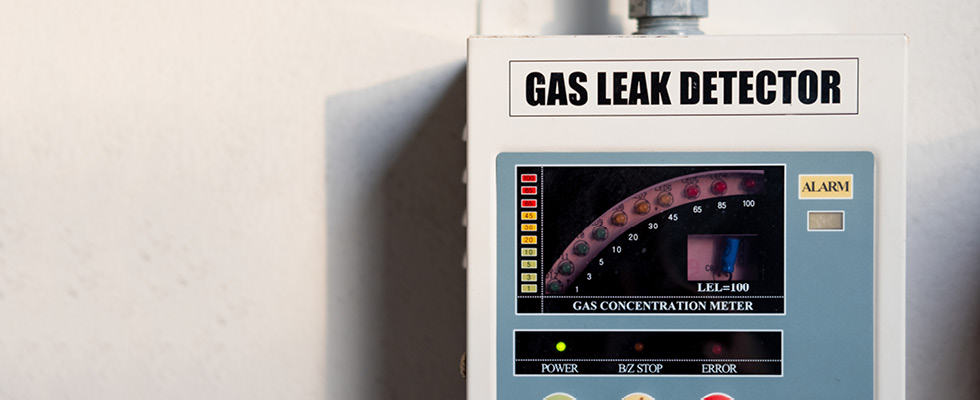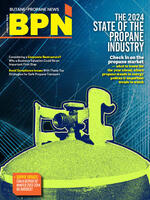
Residential gas detectors have been commercially available in hardware stores and online for many years. These devices have been raised as an issue by plaintiffs’ attorneys in explosion lawsuits against propane marketers alleging that no one smelled the odor of gas before the explosion. Over the years, marketers have developed strategies for the defense of such claims, and these strategies have been largely successful. Now, technological changes and aggressive legislative lobbying may be altering the legal environment.
Essential Safety Device?
Often in conjunction with “odor fade” claims, plaintiffs have argued that propane marketers must inform customers of the availability of gas detectors as a backup gas leak warning device. In many cases they have gone further, asserting that marketers must, as a condition of propane service, require that detectors be installed in customer locations. Some plaintiffs’ experts have advocated that the gas detector be placed on a par with the pressure regulator as “an essential safety device” without which they would consider the use of propane to be unsafe.
By and large, courts have allowed juries to consider “failure to warn” claims against marketers regarding the availability of detectors, but marketers have responded with customer safety literature that includes information about detectors. Most notably, the safety brochures and booklets published by the Propane Education & Research Council (PERC) prominently feature a section on the availability of detectors as a backup warning device. This safety literature (especially the PERC brochures and booklets) has been well received by juries and has become an important tool in the defense arsenal of marketers.
Customer Choice
Efforts by plaintiffs’ lawyers to persuade juries to place the burden on propane marketers to install detectors in all customer locations and to require the use of detectors as a condition of propane service have been unsuccessful. The juries that have considered the issue over the past several decades have correctly concluded that any such mandate should come from a legislature, rather than from an individual jury in an individual lawsuit. They have responded well to the principle that, absent a legislative mandate, installation of these devices should be a matter of consumer choice and responsibility. And, until recently, no statute in the United States has required the installation of detectors.
However, in recent years the legal environment has begun to change, as several prominent explosion incidents have prompted state and local legislation requiring the installation of fuel gas detectors. In addition, changes in detector technology have altered the landscape. To date, laws requiring the installation of gas detectors have been enacted in New York City and Maine. Proposed legislation has been introduced in New York state, Connecticut, Tennessee, New Jersey, Massachusetts, North Carolina and Illinois.
East Harlem
The New York City law was the result of a catastrophic 2014 natural gas explosion that destroyed two apartment buildings, killed eight people and injured 70 others. The National Transportation Safety Board (NTSB) found that the explosion, known locally as the “East Harlem incident,” resulted from a large water leak creating an underground void that undermined an underground gas main, and faulty welds on the gas main that subsequently cracked, causing a leak. Gas odors had been present in the area for some time, but no one called the gas company until 15 minutes before the explosion, too late for a crew to arrive on scene and address the situation.
In 2016, the New York City Council passed an amendment to its Local Law 157 requiring the installation of gas detectors in residential buildings. However, the law was not to take effect until 180 days after “an industry standard concerning the use of natural gas detecting devices in residential buildings [had] been promulgated.” In April 2022, the National Fire Protection Association (NFPA) published a standard for natural gas detectors (NFPA 715). In November 2023, a proposed rule was published by the New York City Department of Buildings requiring the installation of UL-listed gas detectors in single- and multi-unit buildings. Detectors must be installed by licensed electrical contractors. The proposed rule took effect on Jan. 1, 2024, and will require installation of detectors by May 1, 2025.
Ironically, the incident that spawned this law did not result from odor fade — in fact, just the opposite. The odorant worked very well; many people over the course of many hours detected the odor of gas both inside and outside the area of the explosion to warn people in the area of a potentially dangerous gas leak. However, those people simply failed to call the gas company until it was too late.
Farmington
The Maine legislation resulted from a catastrophic propane explosion that occurred in September 2019 in Farmington, Maine (see the August and September 2020 issues of BPN). As a result, the Maine Legislature passed a bill requiring the installation of gas detectors in certain types of buildings, including most, if not all, commercial structures, duplexes and apartment buildings, as well as residential rental units. Installation and maintenance responsibilities are placed on the property owners, as well as on tenants — at least for maintenance and upkeep. The law took effect on Jan. 1, 2022. Again, the incident that provided the impetus for this legislation does not appear to have involved odor fade.
In addition, major natural gas explosion incidents in Silver Spring, Maryland, and Dallas, Texas, have prompted the NTSB to issue the following 2021 recommendation to the NFPA:
“In coordination with the Gas Technology Institute and the International Code Council, revise the National Fuel Gas Code, [NFPA] 54 to require methane detection systems for all types of residential occupancies with gas service. At a minimum, the provisions should cover the installation, maintenance, placement of the detectors and testing requirements.”
To date, NFPA has not implemented such a revision to NFPA 54 requiring the installation of detectors, although, as noted previously, it has published a new standard — NFPA 715 — containing guidelines for the manufacture and placement of the devices.
New Technology
Gas detector technology has certainly evolved over the past decade. The early residential gas detectors used a tin oxide sensor that was vulnerable to false alarms. Alarms would sound in the presence of all kinds of hydrocarbons, from boot cleaner to hairspray. Vapors and gases generated by cooking were a problem. And, detector reliability could be seriously inhibited by dust and humidity — both of which are not uncommon in basement environments. Many of these detectors had to be plugged into electrical outlets. The battery-operated versions suffered from short battery life. Finally, these early detectors have been called, perhaps unfairly, “dumb” detectors because they sound an alarm in the room where they are installed. They do not communicate to remote locations. Such detectors can still be found on the internet and in hardware stores, but they may be in the process of being overshadowed by newer technology.
“Smart” detectors appear to be on the rise. It is not difficult to find gas detectors for sale on the internet that use a mobile app to send a signal to your phone when they go off. So, presumably you can be in a remote location and get a gas leak alarm on your phone. You can then call the fire department or your gas supplier to respond.
Aggressive Lobbying
Consolidated Edison (ConEd), the New York City gas supplier in the East Harlem incident discussed previously, has initiated a program to install gas detectors in customer locations. These detectors not only sound an alarm but send a signal back to ConEd through the company’s smart electric meter system. This allows ConEd technicians to respond to the customer location, regardless of whether the customer has called to report gas odor. (This appears to be a direct response to the failure of customers in New York City to report gas odors, a problem which arose in the East Harlem incident and which seems to be based on local issues.)
Newer gas detector designs use a new sensor, which is claimed to eliminate false alarms and issues with cooking gases, humidity and dust. They are battery powered, claiming battery life of five years or longer.
The manufacturers of these new detectors are quite energetic in promoting their widespread use. They are aggressively lobbying state lawmakers and regulators to impose requirements for their installation. And, they recognize the opportunity that a bad gas explosion incident presents for them to get publicity and make their case. For example, in the wake of a recent terrible natural gas explosion at a chocolate factory in Hershey, Pennsylvania, one manufacturer donated $25,000 worth of its detectors to be installed in the surrounding area.
It is not clear exactly where all these technological changes will lead. But, what is clear is that electronic gas detectors will have a much larger role in the world of the propane marketer, and that more jurisdictions will be considering whether to mandate the installation of detectors.
Next month’s Propane & the Law column will take a closer look at the proposed gas detector legislation currently pending in seven states.


